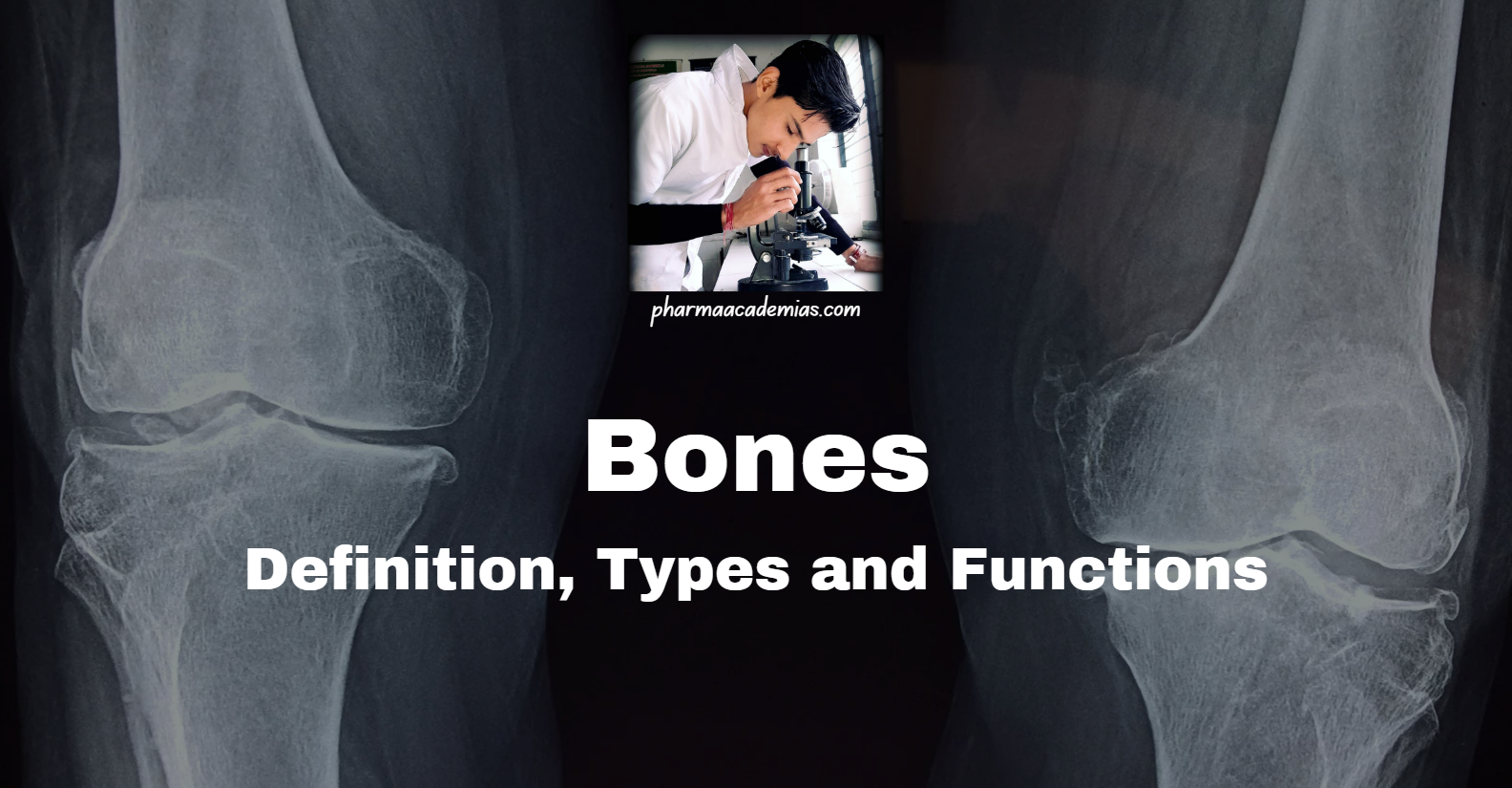Bones make up the skeleton in vertebrates, including humans. They provide structure, protect organs, facilitate movement, produce blood cells, and store minerals like calcium and phosphorus. Bones are dynamic, adapting to activity and metabolic needs. The human skeleton is a complex framework for stability and mobility.
Types of bones
Bones in the human skeleton are categorized into several types based on their shape, structure, and function. Each bone type has distinct characteristics that enable it to perform specific roles in the body, contributing to overall movement, protection, and support. The human body has a highly specialized skeletal system with bones designed for various functions. Here’s a detailed note on the different types of bones:
1. Long bones
Structure: Long bones are characterized by their elongated, cylindrical shape. They are much longer than they are wide, and they typically have a central shaft, known as the diaphysis, which is surrounded by a dense layer of compact bone tissue. At each end of the long bone, there are expanded regions called the epiphyses, which are primarily composed of spongy bone (also known as cancellous bone). This spongy bone is lighter and provides structural support while also housing bone marrow, which is involved in blood cell production. The outer surface of long bones is covered by a thin layer of dense compact bone that adds strength and rigidity.
Examples: Notable examples of long bones include the femur (the thigh bone, which is the longest bone in the body), the humerus (the bone of the upper arm), and the radius and ulna (the two bones of the forearm).
Function: The primary function of long bones is to provide support for the body and facilitate movement. They act as levers that muscles can pull on to produce movement at joints. The structure of long bones also allows them to bear weight efficiently, which is crucial for activities such as standing, walking, and running. Furthermore, the bone marrow within these bones is a critical site for the production of blood cells, including red blood cells, white blood cells, and platelets.
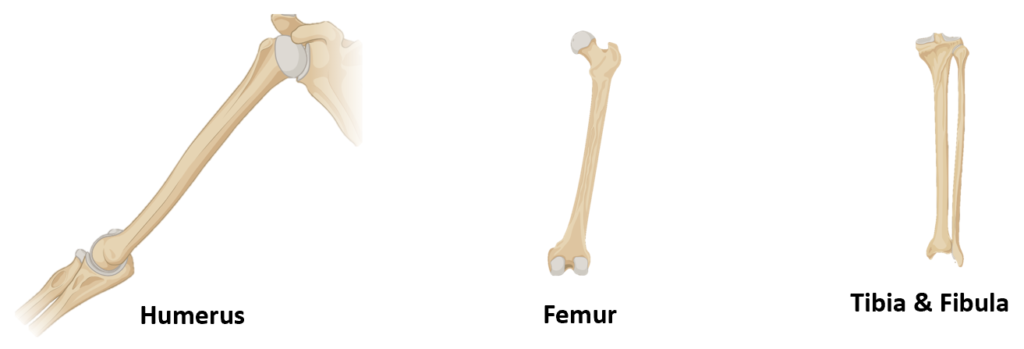
2. Short Bones
Structure: Short bones have a more compact and roughly cube-like shape, with their length, width, and thickness being nearly equal. These bones are primarily composed of spongy bone tissue with a thin layer of compact bone on the surface. The spongy bone inside gives them strength and lightness while allowing for flexibility and shock absorption. The structure of short bones is ideal for their function in providing support and stability in areas where limited motion is required.
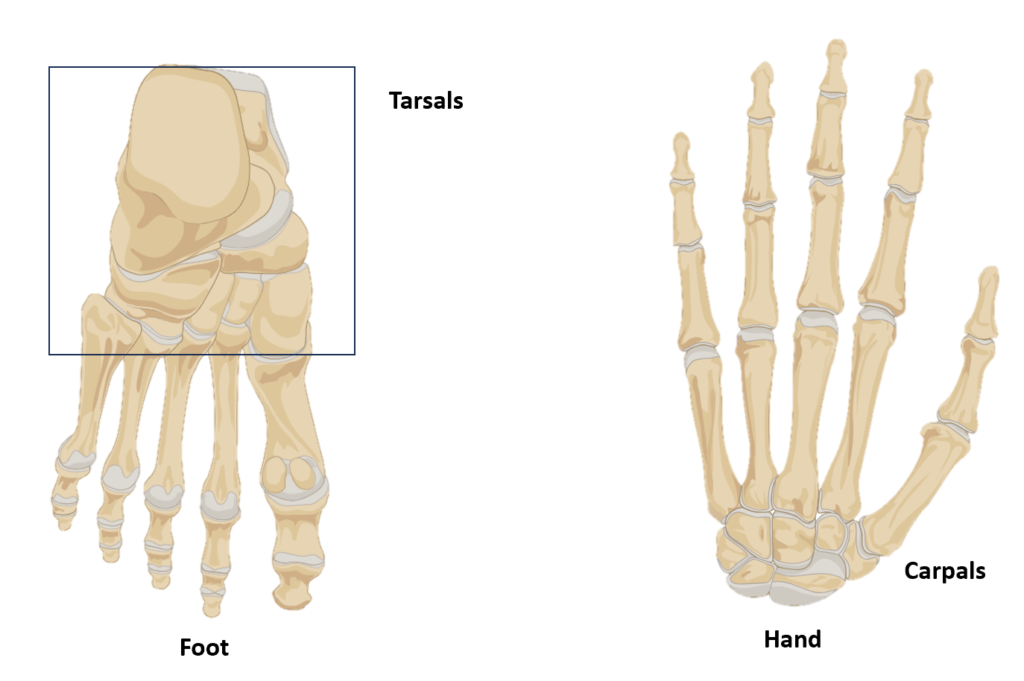
Examples: Common examples of short bones include the carpals (wrist bones) and tarsals (ankle bones), which allow for stability and movement in the hands and feet.
Function: The primary function of short bones is to provide stability and support for joints, particularly in the wrist and ankle regions. They help absorb impact and distribute forces across the joints, which is essential for movements such as walking, running, and manipulating objects. Although short bones have limited movement compared to long bones, their design allows for a wide range of motion within the joints they form.
3. Flat Bones
Structure: Flat bones are typically thin, flat, and slightly curved. They are made up of two layers of compact bone tissue, with a layer of spongy bone sandwiched in between. This structure allows flat bones to be lightweight yet strong, providing a balance of protection and flexibility. The compact bone layers give flat bones strength, while the spongy bone layer reduces their weight without compromising their integrity.
Examples: Examples of flat bones include the skull bones (cranial bones), scapula (shoulder blades), sternum (breastbone), and ribs. These bones play an essential role in protecting vital internal organs and providing attachment sites for muscles.
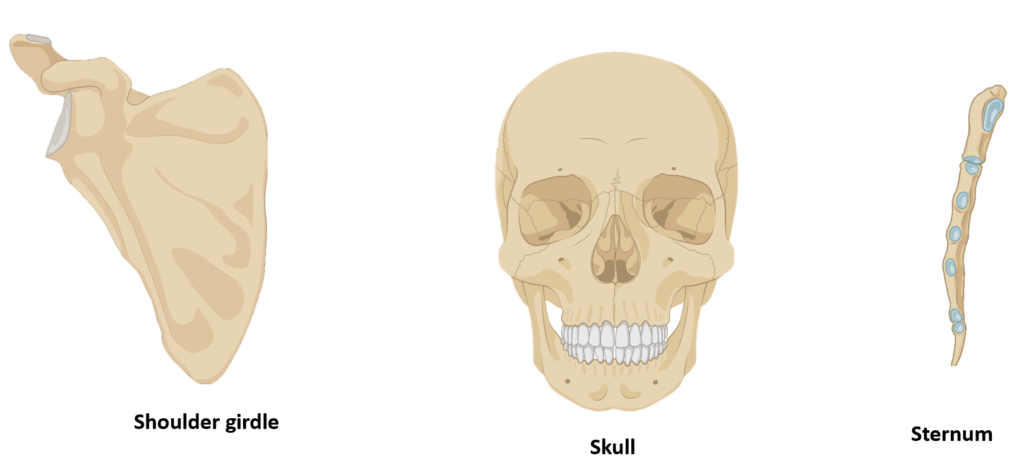
Function: Flat bones primarily serve protective functions, shielding underlying organs from injury. For example, the cranial bones protect the brain, while the ribs and sternum protect the heart and lungs. In addition to protection, flat bones provide attachment points for muscles involved in respiration, movement, and posture, such as the muscles of the chest and upper limbs. Their structure also allows them to act as a buffer during physical activities, absorbing and distributing forces to prevent injury.
4. Irregular Bones
Structure: Irregular bones have complex shapes that do not fit into any of the other categories (long, short, or flat). They have variable amounts of both compact and spongy bone tissue and possess unique shapes that suit their functions. These bones do not have a regular, predictable form but instead are tailored to meet specific structural needs.
Examples: Examples of irregular bones include the vertebrae (the bones of the spinal column), the pelvic bones, and certain facial bones, such as the mandible (lower jaw).
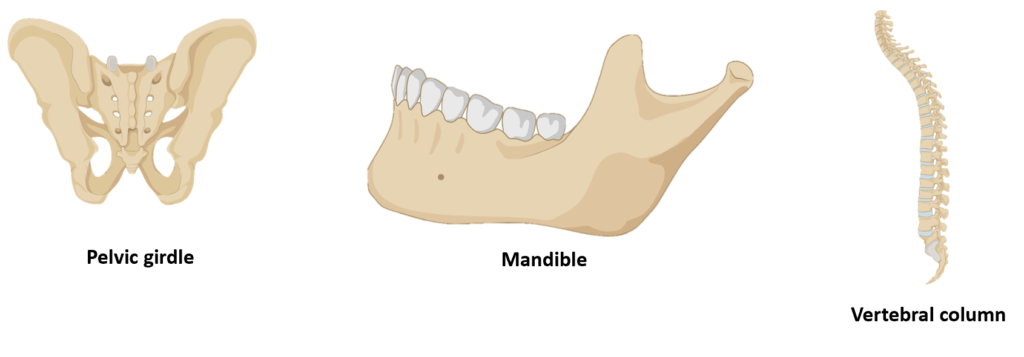
Function: Irregular bones serve a variety of important functions. The vertebrae protect the spinal cord, support the body’s weight, and provide attachment sites for muscles that control movement and posture. The pelvic bones form a strong base that supports the organs in the abdominal cavity and provides a sturdy attachment for the lower limbs. Facial irregular bones, such as the mandible, help form the structure of the face and provide points for muscle attachment necessary for chewing and facial expressions.
5. Sesamoid Bones
Structure: Sesamoid bones are small, round bones that are embedded within tendons, typically near joints. They develop in response to stress and strain placed on tendons during movement. Sesamoid bones can vary in size and number among individuals, and they may not be present in all people. These bones help reduce friction and protect tendons from excessive wear and tear.

Examples: The patella (kneecap) is the largest sesamoid bone in the human body, and smaller sesamoid bones can also be found in the hands, feet, and other areas where tendons pass over joints.
Function: Sesamoid bones protect tendons from excessive wear and tear by acting as pulleys that reduce friction. They also help improve the mechanical efficiency of muscles by altering the direction of tendon pull, thus enhancing the strength and movement of muscles. For example, the patella improves the leverage of the quadriceps muscle, facilitating more efficient leg extension during walking and running.
6. Wormian (Sutural) Bones
Structure: Wormian bones, also known as sutural bones, are small, irregularly shaped bones that are found within the sutures (joints) between some cranial bones. These bones vary greatly in size and number from person to person and are often seen in the skull. The exact number and location of wormian bones can differ among individuals, and they may not always be present.
Examples: Wormian bones are typically found in the sutures of the cranial bones, such as the lambdoid suture and sagittal suture, though they may occur in other regions of the skull.
Function: While the precise function of wormian bones is not completely understood, they are believed to contribute to the overall structure and stability of the skull during development. They may also serve as a way to accommodate forces that occur during the growth and fusion of cranial sutures. However, they are not considered essential for the function of the skull, and their presence does not generally affect the health or functionality of the individual.
These various types of bones comprise the human skeleton, and each type serves specific functions related to support, protection, movement, and hematopoiesis (blood cell production). Understanding the classification of bones is essential for anatomists, healthcare professionals, and researchers studying the structure and function of the skeletal system.
Visit to: Pharmacareerinsider.com

